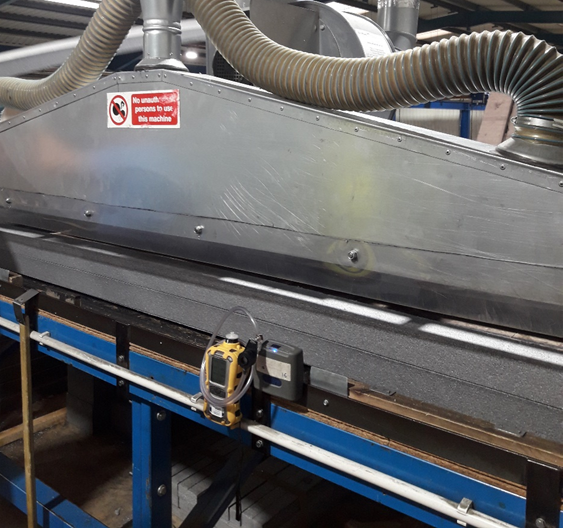Background
DustScanAQ were approached by a manufacturing company specialising in the production of pre-insulated cold-roll steel framed building wall and floor panels. The company occupied a large factory building that housed production/assembly lines, automatic welding and hot-wire cutting machinery and an expanded polystyrene (EPS) production plant. Employees of the company had raised concerns relating to their occupational exposure to dust and fumes. Exposure to substances including dusts and fumes in a place of work relates to the HSE Control of Substances Hazardous to Health (COSSH) 2002 (as amended) regulations. Exposure to lead fumes relates to the HSE Control of Lead at Work (CLAW) 2002 regulations.
Issue
Following a review of the factory Material Safety Data Sheets (MSDS) and after gaining an understanding of the manufacturing site processes through conversations with the factory Health and Safety Manager, DustScanAQ consultants were able to identify the likely exposure risks and potentially harmful materials:
- Inhalable dust including wood and EPS dust – from cutting timber frames, orientated strand board (OSB) and EPS;
- Diesel engine exhaust emissions (DEEE) including CO2 and respirable dust – from forklift truck and HGV emissions;
- Weld fumes including fumes from a suite of metals and metallic compounds (some potentially carcinogenic) – from the welding activities;
- Volatile organic compounds (VOC) including pentane – used in EPS production; and
- Isocyanate (including diphenylmethane diisocyanate (MDI)) fumes – found in adhesives and OSB.
Solution
DustScanAQ conducted inhalable and respirable dust, CO2, metal weld fume, VOC and MDI sampling following MDHS 14/4 guidelines where appropriate and utilised accredited partner laboratories where necessary for specific sample analyses. Both factory staff and representative working areas were monitored using personal sampling equipment and hand-held PID and gas sensors. The factory was fully operational during the exposure survey and staff were undertaking typical manufacturing duties. During the survey DustScanAQ consultants made observations on factory processes, staff behaviours and existing control measures etc.
Concentrations of the target aerosols were compared to COSHH workplace exposure limits (WELs) listed in EH40/2005 and the CLAW lead occupational exposure limit (OEL).

Outcome
The inhalable dust levels recorded were well below the WEL for inhalable dust and wood dust. Both the respirable dust and carbon dioxide concentrations recorded were well below their respective WELs, suggesting that DEEE fumes were not a cause for concern. Metal weld fumes were detected but individual metal concentrations were either below their limit of detection or well below their respective WELs. VOC levels were well below the WEL for pentane. MDI was not detected in the two samples tested.
The results of the exposure assessment suggested that the existing dust and fume local exhaust ventilation (LEV) exposure controls employed by the manufacturing company were adequate and no additional measures were deemed necessary.
Feedback
Many thanks for the report, which is exactly what we were looking and hoping for… the report appears very good indeed
D. Bayliss, Fusion Building Systems
